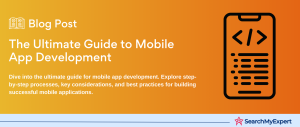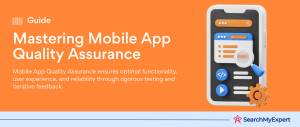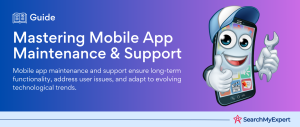In the ever-evolving digital landscape, subscription-based apps and app development have emerged as a cornerstone of entrepreneurial success. This robust strategy transcends offering users mere access to apps; it’s about continuously elevating the user experience, ensuring value, and maintaining a consistent revenue stream. Delving into the intricacies of this model, we elucidate the operational excellence required, potential obstacles, and tactical advances to maximize profitability.
The Strategic Advantage of Subscription App Models
1. Enhanced Revenue Streams
Transitioning from traditional payment structures, subscription-based models provide an avenue for stable and recurring revenue. It’s not solely about immediate financial gain; it’s the sustainability and predictability that attract businesses. By securing subscribers, companies can forecast revenue, enabling strategic planning and resource allocation, fortifying the business’s financial health.
2. User Engagement and Loyalty
Subscription services necessitate a commitment from users, fostering a more engaged relationship. Users seek to extract maximum value from their subscriptions, intensifying app interaction, and engagement. This constant connection presents businesses with invaluable data and insights into user behavior, driving targeted innovation, and personalized user experiences, which further solidify user loyalty.
Navigating the Challenges: Continuous Value Delivery
1. Commitment to Novelty and Excellence
User expectations in subscription models are sky-high. They demand relentless innovation and improvements. Apps must pledge not just to sustain, but to elevate the quality and scope of their offerings. Regular feature updates, captivating content, and immediate bug fixes form the bedrock of maintaining an appealing and competitive app.
2. Precision-Tuned Onboarding and Free Trials
The initial user experience, especially during free trials, is critical. It’s the make-or-break period when users evaluate the app’s worth. A seamless, intuitive onboarding process, combined with strategic trial durations, ensures users grasp the full value proposition, nudging them towards a paid commitment.
Optimizing the Subscription Model: Practical Insights
1. The Art and Science of Personalization
Understanding user preferences and interaction patterns is key. Harnessing data analytics and AI, apps can tailor content, recommendations, and features, enhancing user satisfaction and retention. Personalized push notifications, based on user habits and preferences, can re-engage individuals, reminding them of the app’s value.
Here is the graph visually represents the User data processing flow

2. Customer Support: Beyond Problem-Solving
For subscription models, customer support transcends resolving issues; it’s about relationship building. Efficient, empathetic, and solution-oriented customer service is integral in nurturing user trust and loyalty. It’s a critical touchpoint that can mitigate churn and even harness negative experiences into positive testimonials.
3. Strategic Pricing and Discount Structures
Value perception is paramount. Businesses need to craft pricing strategies that resonate with the perceived value. Introducing tiered subscription plans catering to different user segments, offering discounts on long-term commitments, and occasionally rolling out promotional offers can enhance the appeal. However, the pricing must always mirror the value provided, ensuring users feel their investment is justified.
The Imperative of Adaptation: Transitioning to Subscription-Based Models
Existing apps contemplating the shift to a subscription model need to navigate this transition delicately. Users accustomed to a one-off payment might perceive this change as a downgrade in value. Transparent communication about enhanced features, superior user experiences, and added benefits is crucial to allay concerns. Moreover, offering perks or grandfathering clauses to existing users can ease this transition, mitigating backlash.
Understanding Market Suitability: The Best Fits for Subscription Models
While the subscription-based model is lucrative, it’s not a universal solution. Content-centric apps (like news services, digital magazines, and streaming platforms) and service-oriented apps (including productivity tools, cloud-based services, and specialized professional utilities) thrive within this realm. Their continuous value addition aligns perfectly with recurring payments.
Conversely, for single-purpose apps, e-commerce platforms, or apps where users seek one-time value, the subscription model may prove counterintuitive. Users are unlikely to commit to ongoing payments if they don’t perceive a continuous addition to the app’s value.
Maximizing User Retention: The Art of Keeping Them Subscribed
The battleground isn’t just attracting users to your subscription model; the real challenge lies in keeping them. User retention is pivotal, as a stable subscriber base is the lifeblood of the subscription-based app’s revenue. To keep users from hitting the unsubscribe button requires a blend of strategies that go beyond surface-level engagement.
1. Deliver Consistently Fresh Content
Users crave novelty, and in the digital space, content is king. For content apps like news or entertainment platforms, there’s a need to perpetually provide fresh, relevant, and engaging content. It involves:
- Regular updates with unique, high-quality content that resonates with the subscriber base, encouraging them to stay for the foreseeable future.
- Diversifying content types (videos, articles, podcasts) to cater to varied user preferences, thus broadening the app’s appeal.
- Employing content analytics to understand consumption patterns, helping to refine the content strategy and deliver personalized user experiences.
2. Innovate with Feature Enhancements
The digital audience is tech-savvy, with an appetite for innovation. Apps need to evolve through:
- Regular roll-outs of feature enhancements that improve usability, add new functionalities, or offer a fresh way to interact with the app.
- Collecting user feedback on potential improvements and demonstrating that user voices matter by implementing suggested changes.
- A/B testing new features in controlled environments before full-scale deployment, ensuring they resonate with users and meet their implicit expectations.
3. Engagement Beyond the App
Strengthening the user relationship extends beyond in-app interactions. Strategies include:
- Implementing email newsletters highlighting new content, features, or future updates, keeping the app top-of-mind even when not in use.
- Utilizing social media platforms to build communities around the app’s content or services, encouraging users to interact and stay connected with the brand.
- Offering webinars, live Q&A sessions, or virtual events, especially for service-oriented apps, positioning the app as a value-adding entity in the user’s lifestyle.
4. Rewarding Loyalty
Long-term subscribers are gold, deserving red-carpet treatment. Loyalty programs can:
- Offer tiered rewards based on subscription longevity, encouraging users to remain subscribed to reach new levels with better rewards.
- Provide exclusive content, advanced feature access, or direct channels to the support team for seasoned subscribers.
- Implement a referral system where current users gain perks for bringing in new subscribers, thereby creating a community of brand advocates.
5. Transparent Communication
Trust is the cornerstone of any subscription, and transparent communication fosters this. It’s imperative to:
- Clearly inform users about all updates, especially those involving billing or significant feature changes.
- Provide straightforward, easy-to-find instructions on how users can manage or cancel their subscriptions, ensuring they don’t feel locked in against their will.
- Seek feedback proactively, especially from users opting out of the subscription, to understand their reasons and identify areas for improvement.
Adapting the Model: Special Considerations for Different App Categories
Subscription models are not one-size-fits-all and must be tailored to the specific type of app for maximum effectiveness. Understanding this nuance is crucial in the app’s ability to maintain and grow its subscriber base.
1. Gaming Apps
While traditional gaming apps may struggle with subscription models, there is potential for success with the right strategy:
- Offering exclusive levels, characters, or in-game rewards that are only available to subscribers, adding a sense of exclusivity and heightened experience.
- Providing a hybrid model where the game is free to play, but premium, ad-free experiences with extra features are available for subscribers.
2. E-commerce Apps
These apps require a careful balancing act, as users are already spending money on products or services. However, a subscription service can offer:
- Exclusive discounts or cashback offers that users can earn over their subscription period, essentially allowing the subscription to pay for itself.
- Access to premium support, early access to sales, or members-only products, adding a VIP feel to the subscription.
3. Productivity Apps
Often indispensable tools for work or personal organization, these apps can retain users by:
- Regularly updating with new productivity features, integrations, or user-requested tools, making the app an integral part of their workflow.
- Offering premium tier subscriptions with advanced features for power users while maintaining a basic free version for casual users.
4. Educational Apps
These apps offer vast potential for subscription models with their treasure troves of learning content and resources:
- Continually updating with new learning modules, interactive content, and educational resources that keep learners engaged.
- Offering family or group plans that allow multiple users to access content under one subscription, increasing the app’s value proposition.
Concluding Insights: The Subscriber-Centric Approach
In the realm of subscription-based apps, the user’s perceived value is paramount. Every strategy implemented and feature introduced must be a brick in the pathway to sustained subscription success. By adopting a subscriber-centric approach, businesses can ensure they are attuned to user needs and market dynamics, thereby solidifying their base and driving consistent revenue growth. This commitment to understanding subscribers and innovatively catering to their preferences sets the stage for a flourishing subscription model, making the app an indispensable component of the user’s digital toolkit.
Discover the pinnacle of app creation with these Mobile App Developers.
Table of Contents
Toggle






